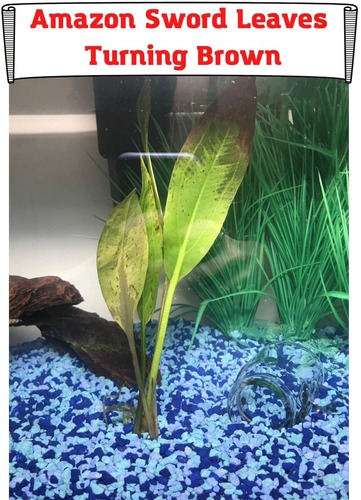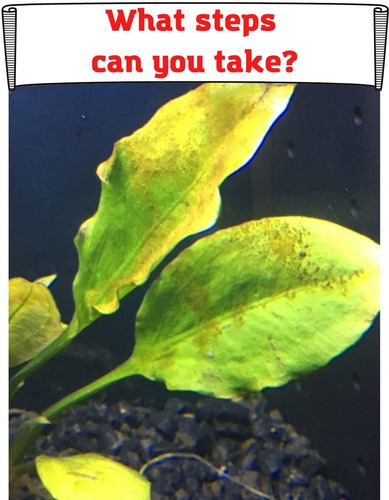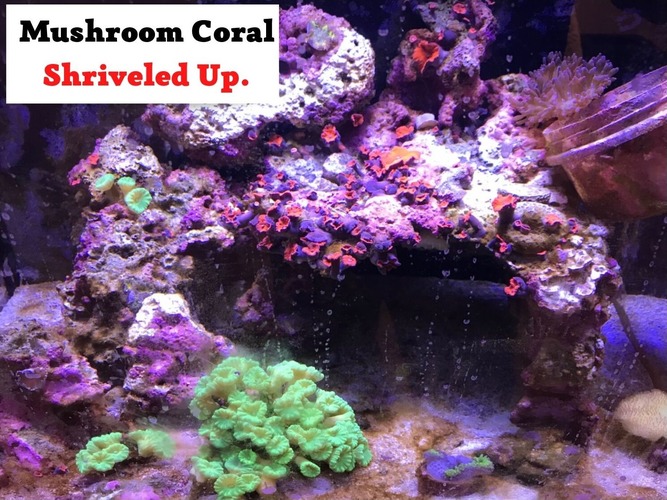
Falling leaves are always sad. But they are even sadder when they are in your aquarium, and you have to clean them up. Well, apart from jokes, if your Amazon Sword leaves turn brown, there must be something that your plant is problematic with.
It can either be light, the lack of fertilizers, both, or even something else. So, how can you figure that out? Let’s see how this article can help you find the solution to this problem.
- Reasons for yellowing of plants
- What causes the rusty spots?
- What steps can you take to resolve the issue?
Normal routine
The plants, including the Amazon Sword, do have a regular cycle in which the plants turn yellow and wither off while you get new leaves, compensating for the loss. If this is the case, you might not need to worry as this is a routine procedure, and you’ll observe it in all plants. However, the frequency of the falling leaves is not much as compared to the growth of new leaves. The higher growth as compared to the falling of leaves indicates healthy plants.
If this is the situation with your aquarium inhabitants, there is nothing to worry about.
But not every case is that simple. So, it is better to review some of the other reasons for this problem, and you’ll get a better overview of the situation at hand along with the best solution to exercise in your case.
Transplant shock
If you have recently changed the tank for your Amazon Sword, then your plant might be experiencing a shock. Just like fish stress, transplant shock is common in plants. You might have heard it to be one of the most rigid varieties, and it is, but transporting to a new location isn’t something that any plant wants. So, it needs time to adjust.
You can leave it for 1-2 weeks in the new tank with approximately the same water parameters as in the previous tank and see the progress. Within this time, it must recover the yellow leaves. Even if you don’t see the recovery of the yellowish leaves, but no new leaves are turning yellow with a lot of new leaves springing, you can be sure that your plant has come back from the shock, and it is good to go.
Brown algae

While you could be finding solutions for your yellowing Amazon Sword leaves, the only issue could be the occurrence of brown algae. Well, it might not be the case every time, but it cannot be ruled out completely, especially if your tank is new.
How can you check if the brown algae on your leaves give an impression of withering plants? You can scrub your leaves. If the substance is removed with a bit of scrubbing, you can confirm that the brown algae are on your leaves. It looks nasty and is never required in your tank. But it gives a lot more satisfaction that there is no problem with your plants and it is just the algae ruining the overall outlook.
Treating algae is another topic, and we have already discussed it on our website. You can have a look and implement the solution.
Treatment of diseases
Do you have fish in your tank too? Have you recently tried to cure velvet? If yes, then this is the probable reason for the yellowing of your Amazon Sword leaves. The addition of copper sulfate to treat the parasite might be practical in terms of the disease, but it can melt your plants, including your favorite Amazon Sword.
You can give it some time for recovery. Once done with the medication, you can add the fertilizers and nutrients to help the plants grow. They might recover in a few conditions. But it is not possible in every case.
Water softness
One of the other reasons for the yellowing of the Amazon Sword’s leaves is the water softness. The softness of water means that it lacks some essential minerals. Magnesium and calcium are usually termed as the minerals responsible for water hardness.
The rusty spots come in when iron takes in the place of calcium (when there is no calcium in your tank). Although iron is essential, too much of everything is terrible, and we can see that in cases where iron replaces calcium. Calcium is essential for the new cell building. So, when there is excessive iron and no calcium, the result you see is the yellowing of leaves and the appearance of rusty spots.
In some cases, your plants might lack iron. It is required for the creation of chlorophyll and it helps in photosynthesis. So, if your plants lack this nutrient, the result could be clear rusty spots on the leaves.
Some of these spots might get away once the nutrient deficiency is filled, while the ones that have damaged the leaves entirely cannot be treated. So, it is better to take that leave off the plant.
The store may be a problem
This is likely a problem when you shop for your aquarium plants and pets from the lavish stores. Your Amazon Sword might not be in any good condition from the start. But the lighting, excessive mineral addition, and the pomp of the store might have made you believe that the plant is healthy. Once you bring it into your tank in normal conditions, it starts dying.
There is no cure to this problem, and it can just be referred to as bad luck or the lack of judgment on your part, and you cannot do much in making it better. You’ll have to let it go.
Light duration
Adequate lighting is essential for maintaining the plant’s green color and its overall health condition. Going for lower or extra hours of lighting might also not be a healthy practice. Your plants might want a bit different exposure when it comes to lighting. But usually, 8 hours of lighting is enough for them to compete for the nutrients and make their own food.
You can experiment with your tank to find suitable lighting hours depending upon your plant’s needs.
Liquid fertilizer
The lack of minerals and nutrients, in general, might be lacking in your tank, the result of which can be yellowing of the leaves and even the appearance of the brownish spots.
You have to offer your plant all the essential ingredients to grow; otherwise, the leaves will start falling and create other detrimental impacts on the plant’s health.
The addition of Seachem might be the right thing to do here. But you must check your water parameters before you can decide on it. If the water lacks nutrients, Seachem must be added for better plant growth.
What steps can you take?

Now when you have gone through the potential causes of the problem, what are some of the remedial steps you can take in this regard?
Remove the leaves
Firstly, remove the yellowish or brown leaves because they are all already dying, and it will take a lot of nutrients and energy from the plants to rebuild them, and frankly, there is no hope. So remove those leaves so the Amazon Sword can utilize this energy to grow the new leaves.
Root Tabs
According to the experts, the inclusion of Root Tabs in the tank is one of the essential things, especially if you have the Amazon Sword and the other aquatic plants. The root tabs provide the necessary nutrients for the plant to grow.
Add CO2
One of the other solutions that can help revive the yellowish and brown Amazon Sword’s leaves is carbon dioxide injection. You might want to do it manually or buy an automated system to manage the amount of carbon dioxide in the tank.
However, you must be extra careful in administering it when you have the fish in the same aquarium. A bit of extra carbon dioxide can kill your fish.
Summing up
The yellowness of your amazon Swords can be because of the change in atmosphere or the problems in water parameters. So, it is better to check all these aspects before looking for remedial measures. Once you identify the cause of the problem, you’ll be in a better position to find the solution.
- Pleco Not Eating. Main Reasons Your Pleco Is Starving - February 21, 2022
- Foxface Fish Sting: Any Danger? And What To Do To Relieve Pain? - February 20, 2022
- White Stuff Coming Out Of Snail – Dangerous? Should You Worry About It? - February 19, 2022




